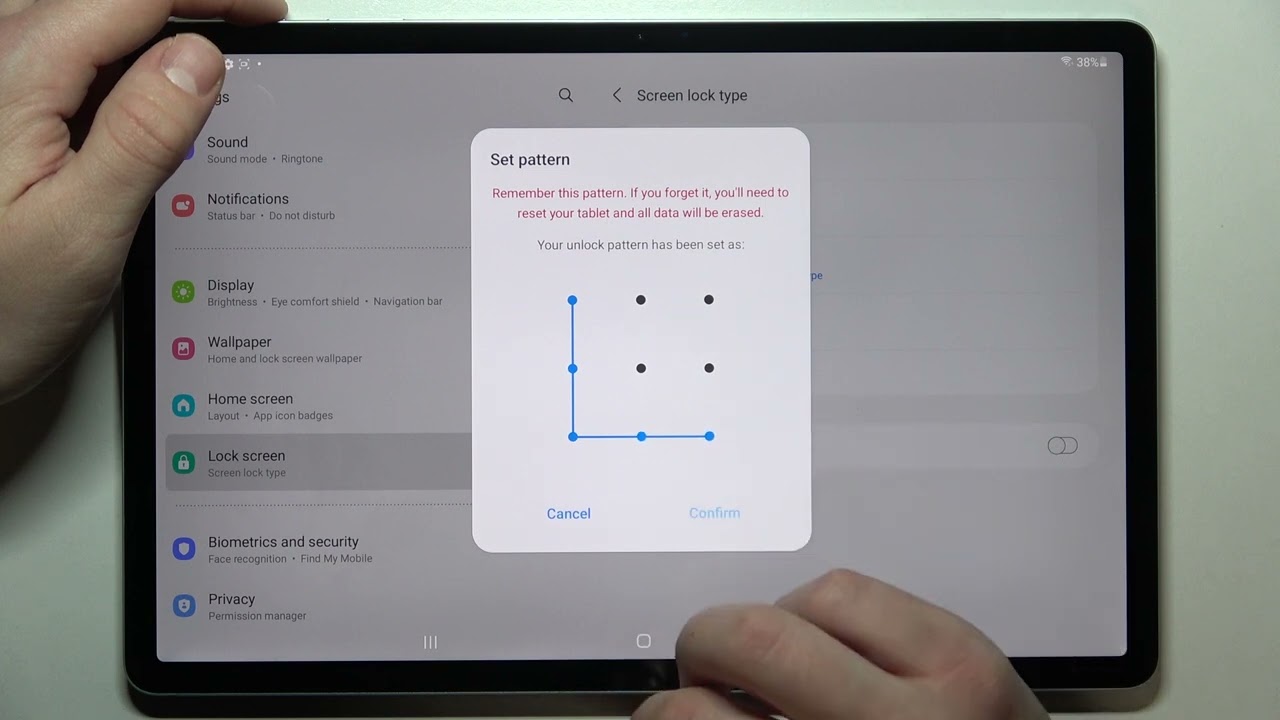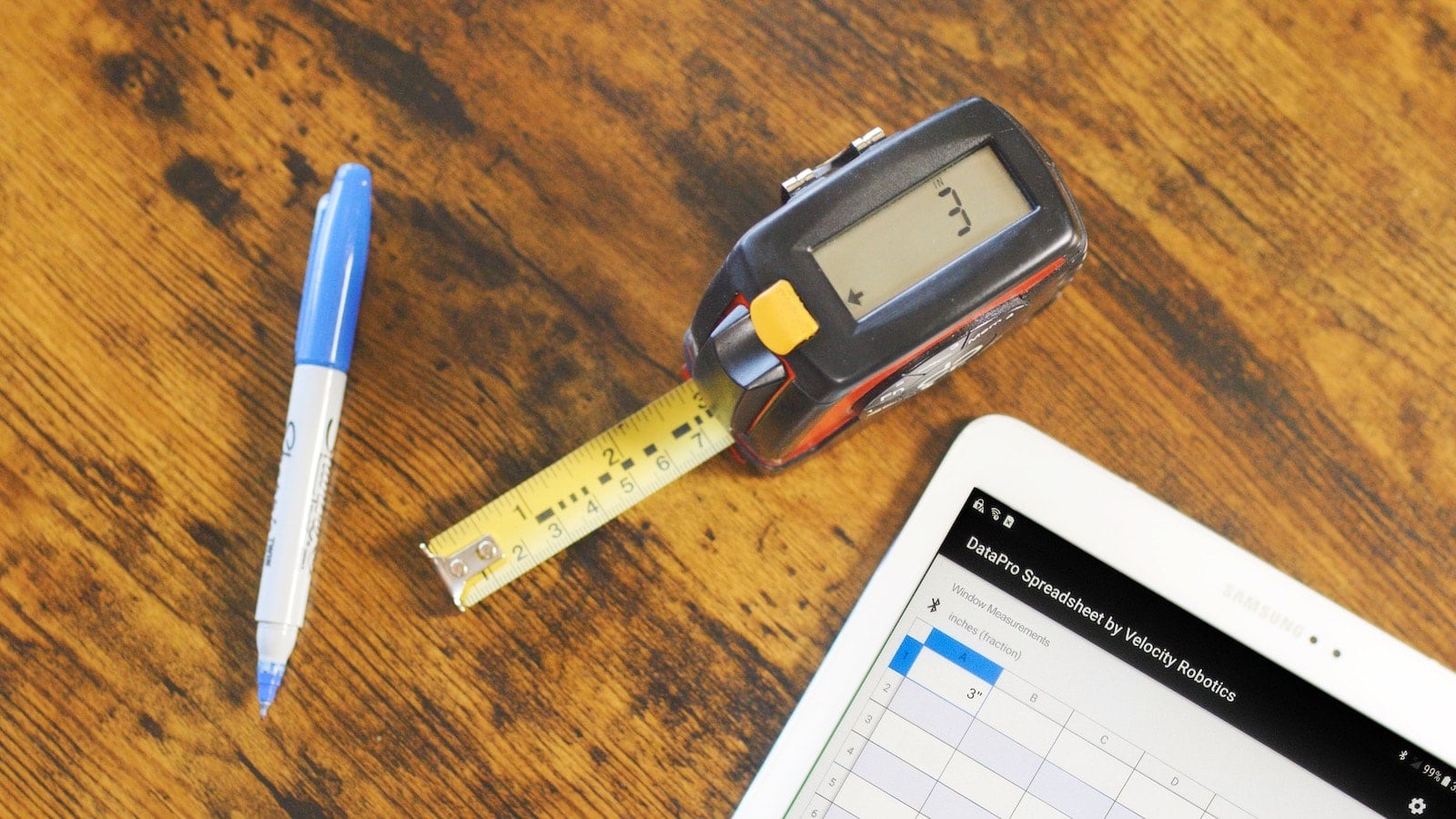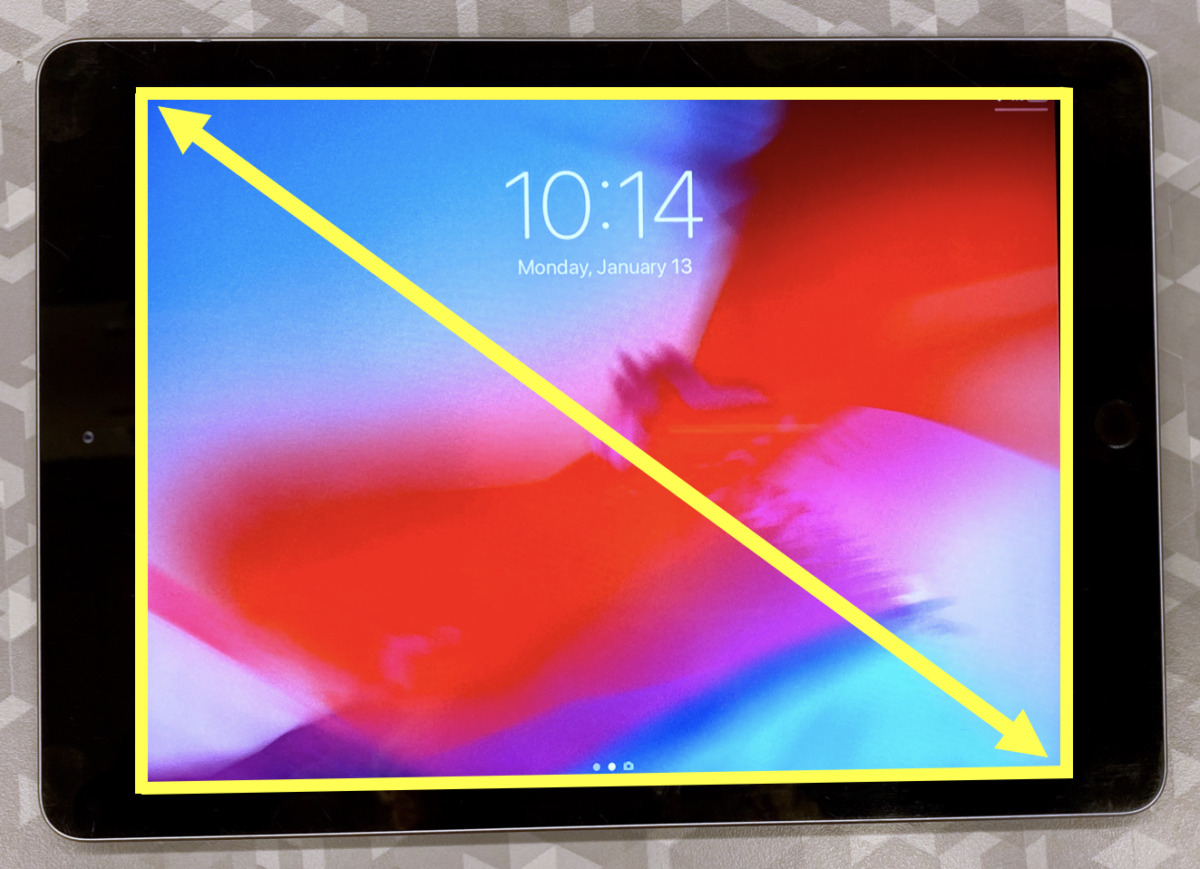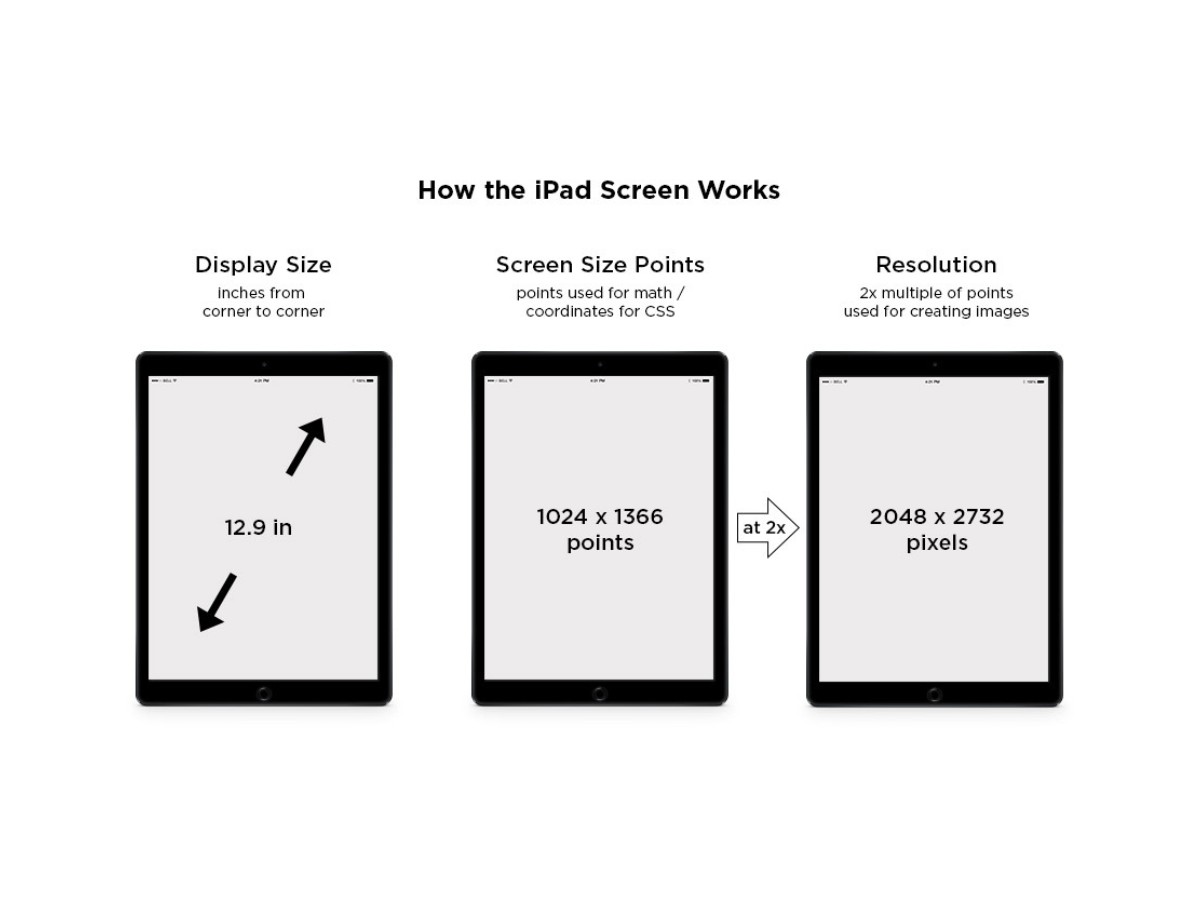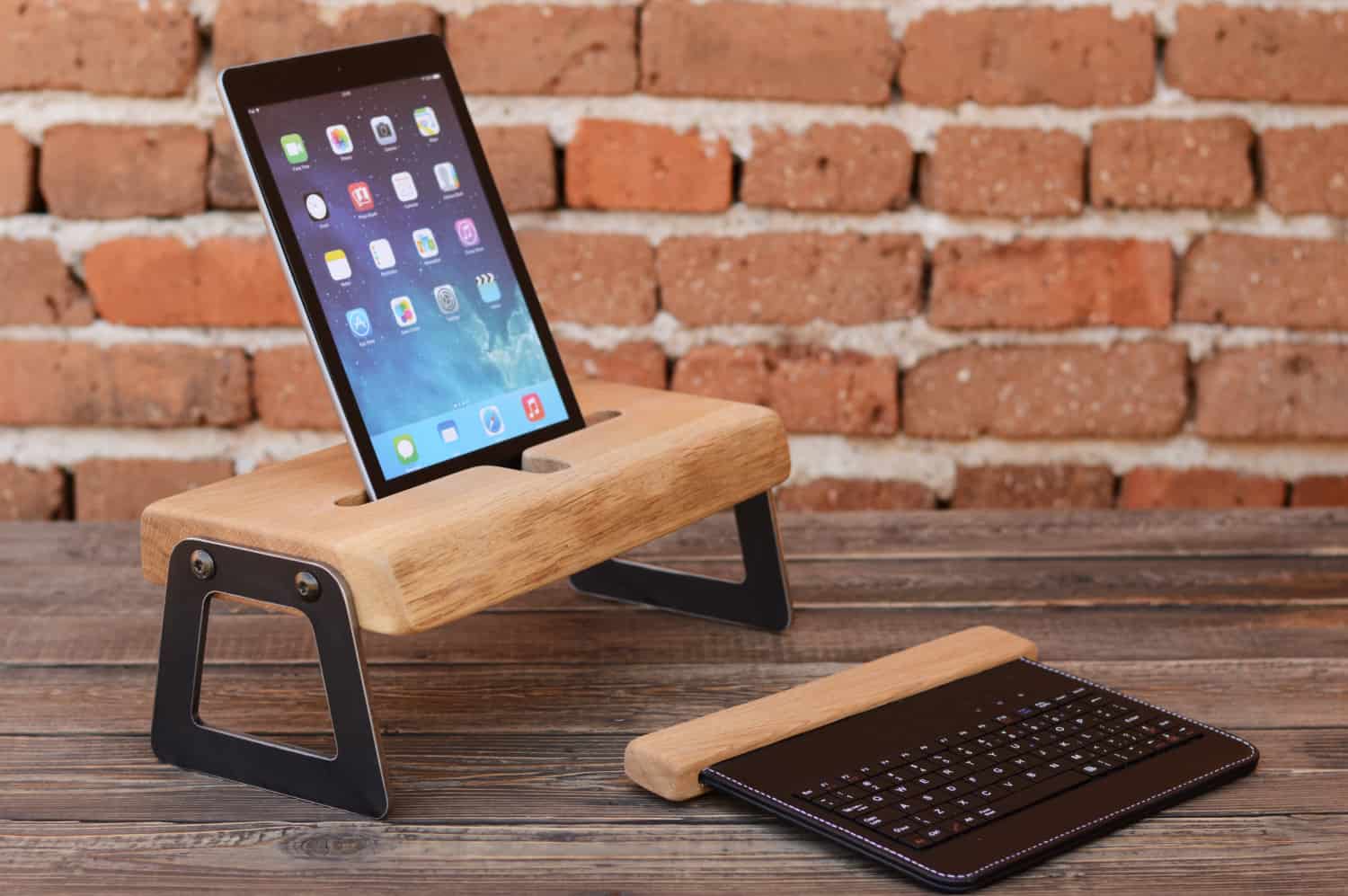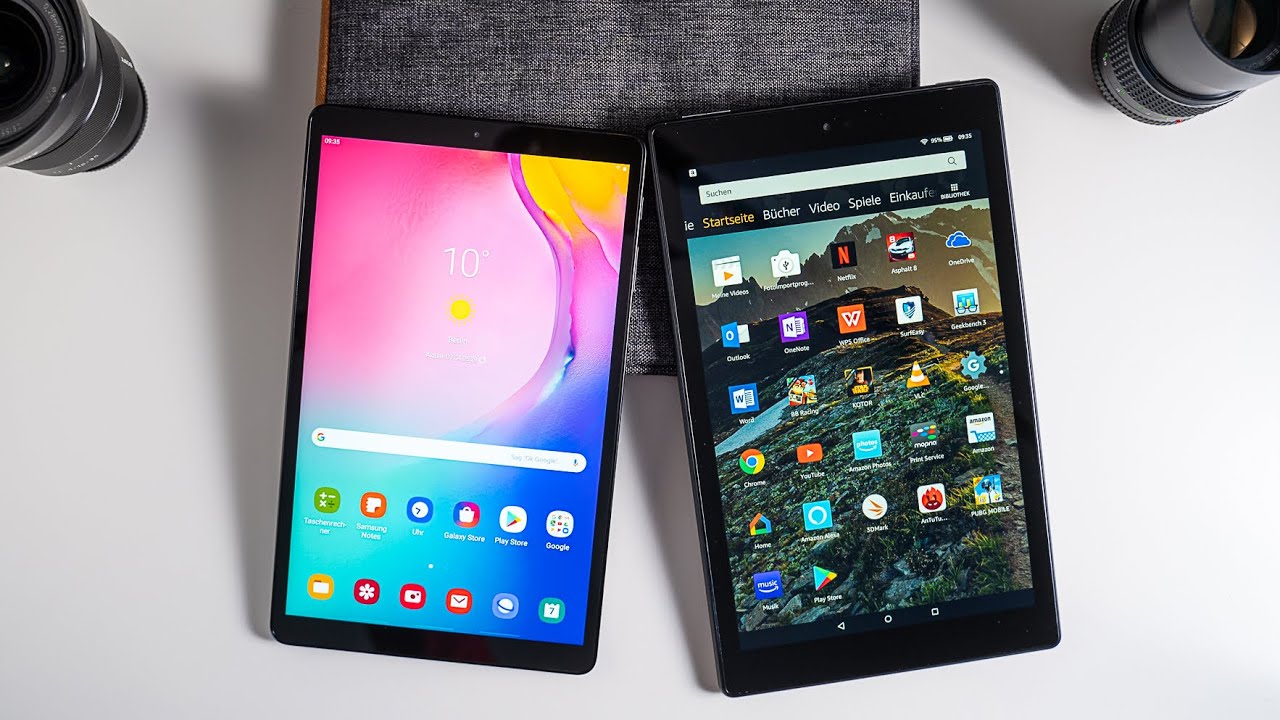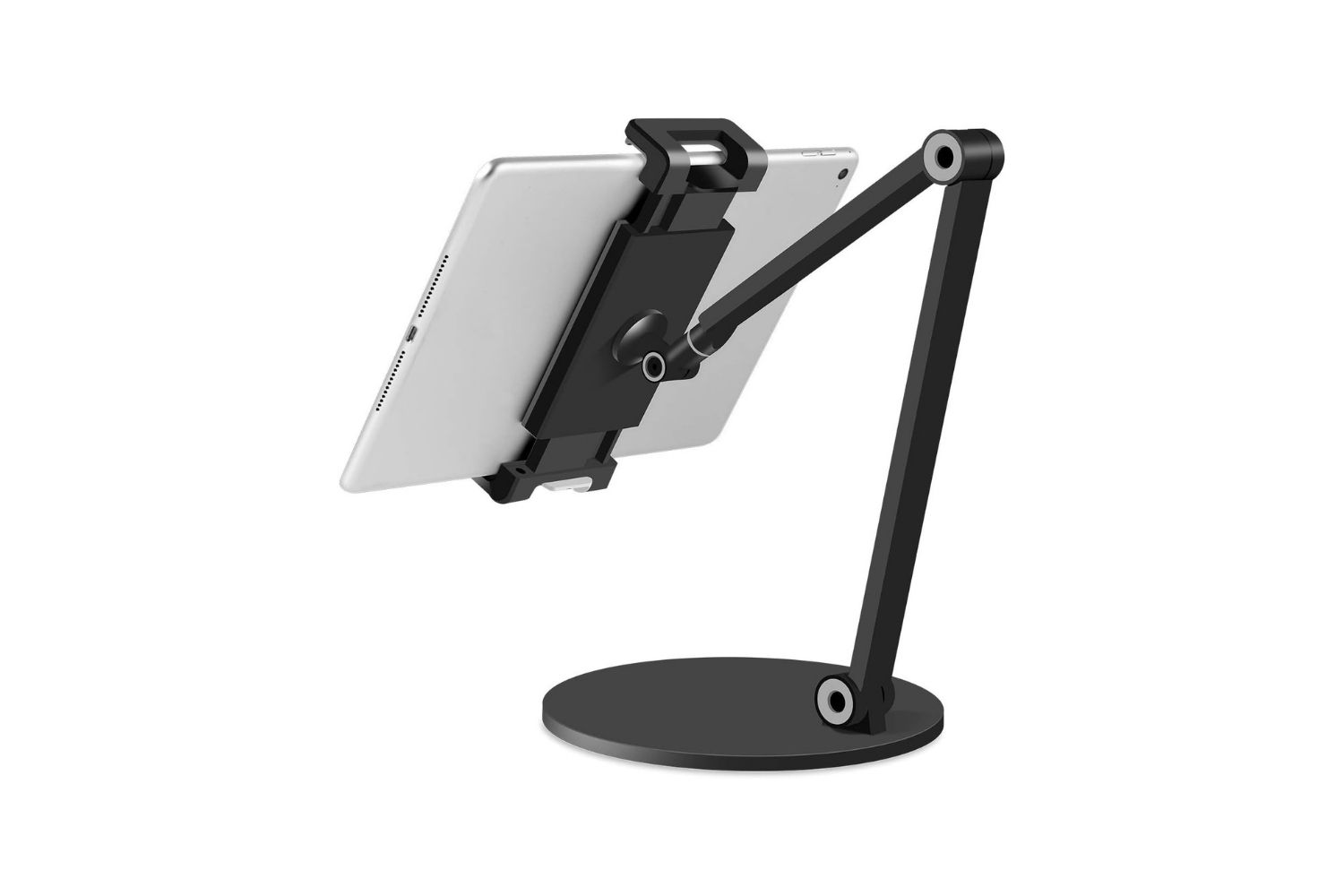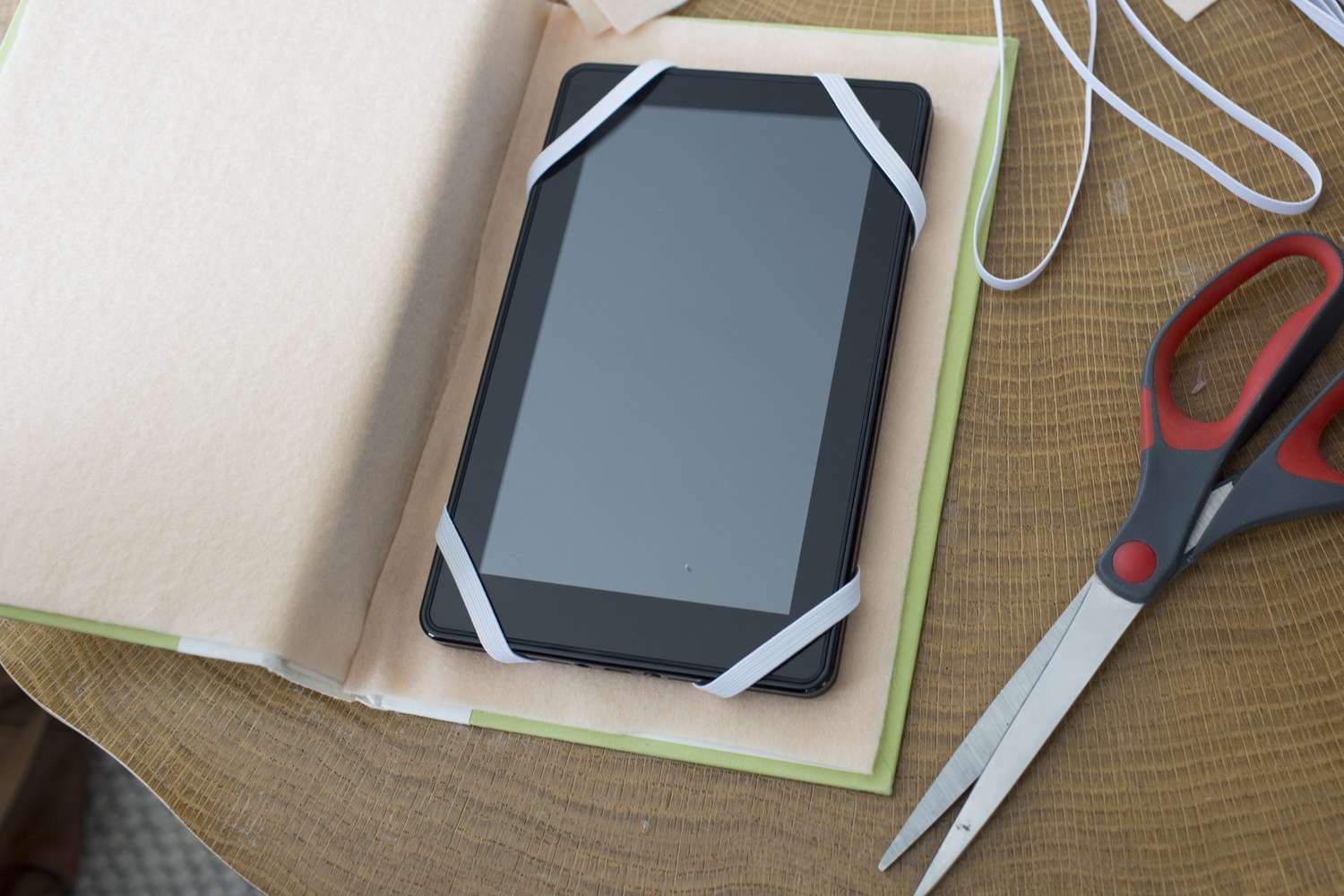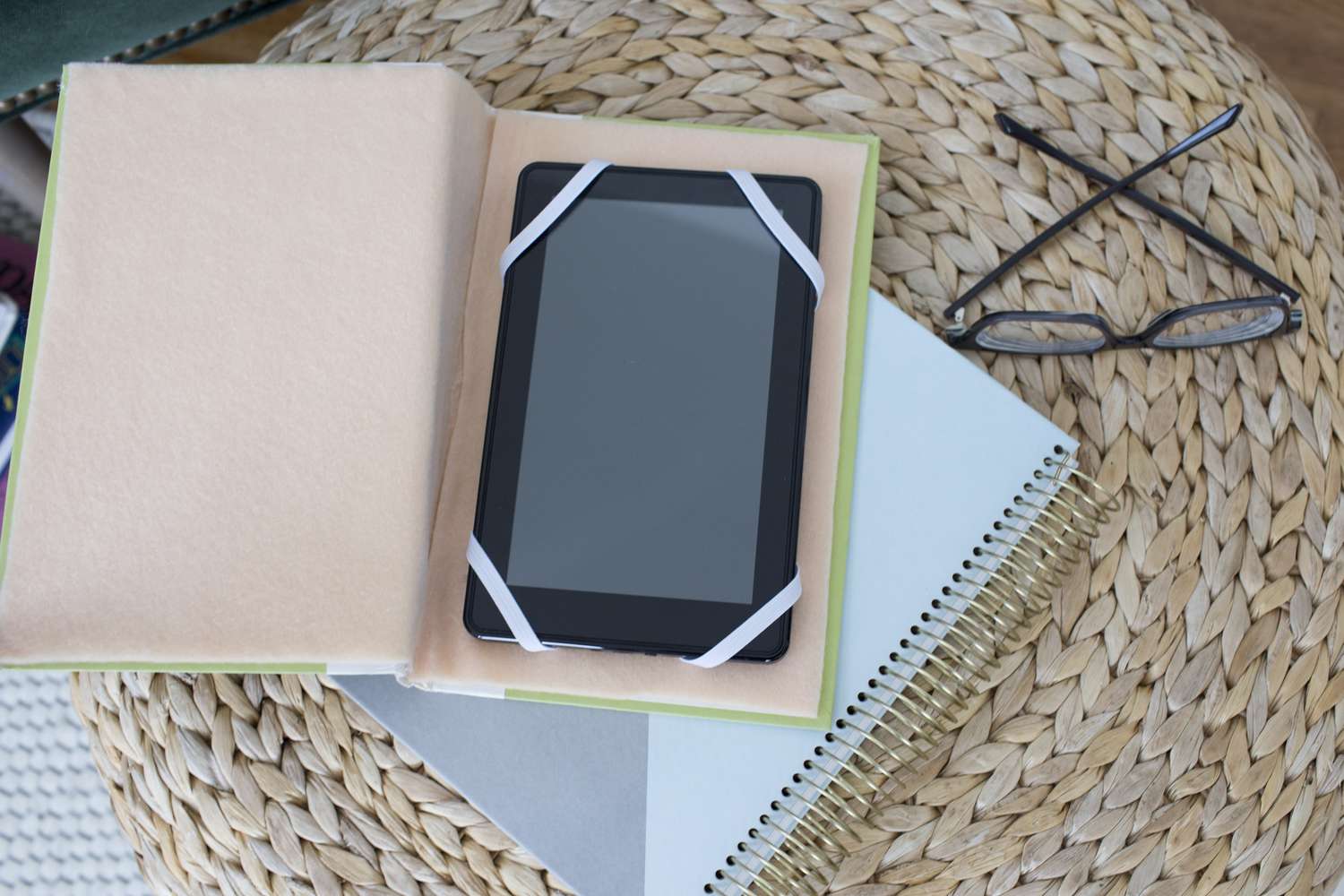Introduction
When it comes to choosing the perfect tablet for your needs, there are a multitude of factors to consider. One such factor is the size of the tablet. The size of a tablet can greatly impact its portability, usability, and overall user experience. Whether you are a student, a professional, or a casual user, understanding how to measure tablet sizes accurately is essential in making an informed decision.
Measuring tablet sizes allows you to compare different models, determine if a tablet will fit into your bag or purse, and decide if it will be comfortable to use for long periods. This knowledge can save you from any future disappointments or inconveniences related to purchasing a tablet that does not meet your size preferences. Additionally, knowing how to measure tablet sizes can be beneficial if you’re planning to purchase accessories such as cases, stands, or keyboards, as these items often require specific tablet dimensions.
To ensure accurate measurements, it’s important to use the right tools and follow a step-by-step approach. In this guide, we will discuss the tools needed for measuring tablet sizes and walk you through the measurement process. We will also provide tips on accuracy and precision, as well as common mistakes to avoid. By the end of this article, you will have a comprehensive understanding of how to measure tablet sizes effectively.
So, whether you’re considering purchasing your first tablet or looking to upgrade to a new model, read on to discover the ins and outs of measuring tablet sizes. Armed with this knowledge, you’ll be well-equipped to make a confident decision and find the tablet that perfectly fits your needs and preferences.
Why Measuring Tablet Sizes is Important
Measuring tablet sizes is crucial for several reasons. Understanding why it is important will help you make an informed decision when purchasing a tablet that suits your needs. Here are a few key reasons why measuring tablet sizes matters:
- Portability: Tablet size plays a significant role in its portability. If you frequently travel or carry your tablet with you, you’ll want to ensure it fits comfortably in your bag or backpack. Measuring the dimensions of a tablet allows you to know its exact size and determine if it will fit conveniently in your desired carrying case.
- Usability: The size of a tablet can impact its usability, especially if you plan on using it for prolonged periods. A larger tablet may offer a better viewing experience for multimedia consumption and productivity tasks. On the other hand, a smaller tablet may be more portable and suitable for on-the-go usage. Measuring tablet sizes helps you find the right balance between usability and portability according to your preferences.
- Ergonomics: Ergonomics is crucial for a comfortable and enjoyable tablet experience. Your tablet should fit well in your hands, allowing for easy manipulation and reducing strain on your wrists. By measuring tablet sizes, you can determine if the device is comfortable to hold and operate, preventing any discomfort or potential health issues associated with extended tablet use.
- Accessory Compatibility: Measuring the size of a tablet is essential if you plan on purchasing accessories such as cases, stands, or keyboards. These accessories are often designed to fit specific tablet dimensions. Knowing the exact measurements of your tablet ensures compatibility with the accessories you wish to purchase, saving you time and money in the long run.
- Comparison: Measuring tablet sizes enables you to compare different models and select the one that best fits your needs. You can easily determine which tablet offers a larger or smaller display, and you can also consider other factors such as weight and thickness. These comparisons allow you to make a well-informed decision based on your specific requirements, ensuring that you invest in a tablet that meets your expectations.
By understanding the importance of measuring tablet sizes, you can ensure that you choose a tablet that aligns perfectly with your lifestyle, preferences, and intended usage. It gives you the freedom to select a tablet that will provide a seamless user experience, whether it’s for work, entertainment, or educational purposes.
Tools Needed for Measuring Tablet Sizes
To accurately measure tablet sizes, you will need a few essential tools. These tools will help you obtain precise measurements, ensuring that you have the most accurate information when comparing different tablet models or selecting accessories. Here are the tools you’ll need:
- Measuring Tape or Ruler: A measuring tape or ruler is crucial for determining the length, width, and height of the tablet. Opt for a measuring tape or ruler with clear markings and a small enough scale to provide accurate measurements.
- Soft Cloth or Microfiber Cleaning Cloth: Before measuring the tablet, it’s important to clean the screen and the entire surface to remove any dust or smudges. A soft cloth or microfiber cleaning cloth will help you achieve a clear and accurate measurement.
- Pen and Paper: Keep a pen and paper handy to jot down the measurements as you take them. This will help you avoid any confusion or mistakes when comparing or sharing the measurements later on.
- Optional: Digital Calipers: While not necessary, digital calipers can provide more precise measurements, especially for thickness or bezel sizes. If you want to measure these aspects with utmost accuracy, consider getting a pair of digital calipers.
Before measuring your tablet, ensure that you have a stable surface to work on, such as a table or desk. Place the tablet on a flat surface to prevent any wobbling or tilting during the measurement process. This will help you maintain accuracy in your measurements.
Remember to handle the tablet gently while measuring and avoid applying excessive pressure. This will prevent any potential damage to the device and provide accurate measurements.
Having these tools ready and following proper guidelines will ensure that you can measure tablet sizes with precision. With accurate measurements in hand, you can confidently compare tablet models and make an informed decision when choosing the tablet that best meets your requirements.
Step-by-Step Guide on How to Measure Tablet Sizes
Measuring tablet sizes may seem like a simple task, but it is important to follow a systematic approach to ensure accurate measurements. Here is a step-by-step guide on how to measure tablet sizes:
- Prepare the Tablet: Clean the tablet’s screen and surface using a soft cloth or microfiber cleaning cloth to remove any smudges or debris. Place the tablet on a stable and flat surface, ensuring it is secure and doesn’t wobble.
- Measure the Length: Using a measuring tape or ruler, place one end at the top edge of the tablet and extend it to the bottom edge. Read the measurement in either inches or centimeters. Note down the length measurement.
- Measure the Width: Take the measuring tape or ruler and place one end against the left edge of the tablet. Extend it horizontally to the right edge and record the width measurement in inches or centimeters.
- Measure the Height: Position the measuring tape or ruler vertically against the back of the tablet and extend it until it reaches the top. Record the height measurement in inches or centimeters.
- Optional: Measure the Thickness or Bezel Size: If desired, you can use digital calipers to measure the thickness of the tablet or the size of the bezels. Gently place the calipers on the designated area and read the measurements accurately.
- Record and Compare: Once you have all the measurements, jot them down on a piece of paper or in a digital document. You can now compare the measurements with the specifications provided by manufacturers or use them to find accessories that perfectly fit your tablet.
Remember to perform each step with care, ensuring that the measuring tape or ruler is straight and aligned properly with the tablet’s edges. Take the measurements multiple times to ensure accuracy, especially if there are any variations in your initial measurements.
By following this step-by-step guide, you can easily measure the size of your tablet and obtain precise measurements. These measurements will help you make informed decisions when purchasing a tablet or accessories that match its dimensions perfectly.
Tips on Accuracy and Precision in Measuring Tablet Sizes
When it comes to measuring tablet sizes, accuracy and precision are key to obtaining reliable measurements. Here are some helpful tips to ensure your measurements are as accurate and precise as possible:
- Use a Stable Surface: Ensure that you have a stable surface, such as a table or desk, to measure the tablet. This will prevent any movement or wobbling during the measurement process, resulting in precise measurements.
- Handle the Tablet Gently: When measuring the tablet, handle it with care to avoid any damage or alterations to its shape. Applying excessive pressure can distort the measurements, so it’s important to handle the tablet gently throughout the process.
- Measure Multiple Times: To ensure accuracy, measure the tablet multiple times and compare the results. This helps identify any inconsistencies and allows you to take an average of the measurements for greater accuracy.
- Take Note of Measurements: Record the measurements as you take them. It’s easy to forget or mix up the measurements if you rely on memory alone. Writing them down ensures accuracy and eliminates any confusion later on.
- Verify Specifications: After measuring the tablet, compare the obtained measurements with the specifications provided by the manufacturer. This verification will allow you to ensure the accuracy of your measurements and detect any discrepancies.
- Consult the User Manual: If you are unsure about the procedure or specific guidelines for measuring your tablet, refer to the user manual. It may contain detailed instructions specific to your tablet model, ensuring accurate measurements.
- Consider Bezels and Depth: When measuring tablet sizes, take into account the size of the bezels and the overall thickness of the tablet. These factors can impact its dimensions and usability, so it’s important to consider them when comparing tablets or searching for compatible accessories.
By following these tips, you can improve the accuracy and precision of your measurements when determining tablet sizes. This will help you make more informed decisions when purchasing a tablet or accessories, ensuring a perfect fit for your needs and preferences.
Common Mistakes to Avoid When Measuring Tablet Sizes
Measuring tablet sizes may seem like a straightforward task, but there are common mistakes that can lead to inaccurate measurements. To ensure the most reliable results, it’s important to be aware of these mistakes and avoid them. Here are some common mistakes to avoid when measuring tablet sizes:
- Inaccurate Placement: Placing the measuring tape or ruler at an incorrect starting point can lead to inaccurate measurements. Ensure that the measuring tool is correctly positioned at the edge of the tablet before recording any measurements.
- Uneven Surfaces: Measuring the tablet on an uneven or unstable surface can result in incorrect measurements. Make sure to place the tablet on a flat and stable surface to maintain accuracy throughout the measuring process.
- Failure to Clean: Neglecting to clean the tablet’s surface can lead to inaccurate measurements. Dust, dirt, or smudges can affect the contact between the measuring tool and the tablet, resulting in measurements that are slightly off. Always wipe the tablet’s surface clean before measuring.
- Excessive Force: Applying excessive pressure while measuring can compress the tablet’s edges, leading to inaccurate measurements. Be gentle when handling the tablet and avoid pressing too hard on it with the measuring tool.
- Single Measurement: Relying on a single measurement can be misleading, as there may be slight variations in measurements due to human error or tablet design. Always measure the tablet multiple times and take an average of the measurements for increased accuracy.
- Forgetting Bezels and Thickness: Neglecting to account for the size of the tablet’s bezels or thickness can result in inaccurate measurements. Ensure that you measure the entire dimensions of the tablet, including bezels, to get a comprehensive understanding of its size.
- Not Verifying Specifications: Failing to cross-check your measurements with the manufacturer’s specifications can lead to discrepancies and confusion. Always compare your measurements with the provided specifications to ensure accuracy.
By avoiding these common mistakes, you can improve the accuracy and reliability of your tablet size measurements. Taking the time to measure the tablet correctly will enable you to make well-informed decisions when purchasing a tablet or selecting compatible accessories.
Understanding the Importance of Measuring Tablet Sizes for Different Purposes
Measuring tablet sizes holds significant importance for various purposes, catering to different individuals’ needs and preferences. Let’s delve into why understanding tablet sizes is crucial for different situations:
1. Personal Use: Whether you use a tablet for reading, browsing, or entertainment purposes, measuring tablet sizes is essential for personal comfort and satisfaction. A tablet that is too large may be cumbersome to hold or carry around, while a tablet that is too small may strain your eyes or hinder your productivity. By measuring tablet sizes, you can find a device that meets your personal needs and provides a comfortable user experience.
2. Work or Productivity: Tablets are increasingly used for work-related tasks, such as presentations, note-taking, or document editing. Measuring tablet sizes becomes crucial in this context as it allows you to assess screen real estate and ensure it caters to your work requirements. A larger tablet with ample screen space may enhance productivity, while a smaller tablet may offer better portability for on-the-go professionals.
3. Education and Learning: Tablets have become an integral part of education, offering interactive learning experiences. Measuring tablet sizes helps educators and students choose devices that facilitate effective learning. A larger tablet may be preferable for viewing educational content, while a smaller one may be more convenient for students to carry around in school or college.
4. Gaming and Entertainment: Gamers and multimedia enthusiasts often prioritize screen size and visuals when choosing a tablet. Measuring tablet sizes allows them to identify devices with larger displays for immersive gaming and enhanced visual experiences. Additionally, measuring tablet sizes is crucial for selecting accessories, such as gaming controllers or stands, that enhance the gaming and entertainment experience.
5. Compatibility with Accessories: Measuring tablet sizes becomes vital when purchasing accessories such as cases, stands, or keyboards. These accessories are often designed to fit specific tablet dimensions accurately. By measuring tablet sizes, you can ensure compatibility with accessories, thereby enhancing functionality and protection for your tablet.
6. Comparison and Purchase Decisions: Measuring tablet sizes enables easy comparison between different tablet models. By understanding the physical dimensions, you can assess how a tablet matches up against your preferences and requirements. It allows you to make informed purchase decisions, avoiding any surprises regarding the size and usability of the tablet.
Overall, measuring tablet sizes plays a crucial role across various domains, ensuring comfort, productivity, and compatibility for users. It allows individuals to find tablets that meet their specific requirements and provide an optimal user experience. Whether you’re using a tablet for personal or professional purposes, measuring its size helps you make well-informed decisions and enhances your overall satisfaction with the device.
Conclusion
Measuring tablet sizes is an essential task for anyone in the market for a new tablet or looking to purchase accessories for their existing device. By understanding and measuring the dimensions of a tablet, you can make informed decisions that align with your preferences, needs, and intended usage.
We discussed the importance of measuring tablet sizes, emphasizing how it impacts portability, usability, ergonomics, and compatibility with accessories. Accurate measurements allow you to compare different tablet models, determine if a tablet suits your lifestyle, and ensure it fits comfortably in your bag or purse.
To measure tablet sizes accurately, you need a few essential tools such as a measuring tape or ruler, a soft cloth for cleaning, and a pen and paper for recording measurements. We provided a step-by-step guide to help you through the measurement process, emphasizing the importance of handling the tablet gently and measuring multiple times for increased accuracy.
Furthermore, we shared tips to improve accuracy and precision, such as using a stable surface, avoiding excessive force, and verifying measurements with manufacturer specifications. We also highlighted common mistakes to avoid, such as inaccurately placing the measuring tool or neglecting to account for bezels and thickness.
Lastly, we discussed the importance of measuring tablet sizes for different purposes, including personal use, work productivity, education, gaming, entertainment, and compatibility with accessories. Understanding the dimensions of a tablet enables you to choose a device that suits your specific requirements and enhances your overall user experience.
With the knowledge gained from this article, you are now equipped to confidently measure tablet sizes and make informed decisions when it comes to choosing a tablet that perfectly fits your needs. Remember to be thorough in your measurements, consider various factors such as portability and usability, and always verify with manufacturer specifications. Happy tablet hunting!







